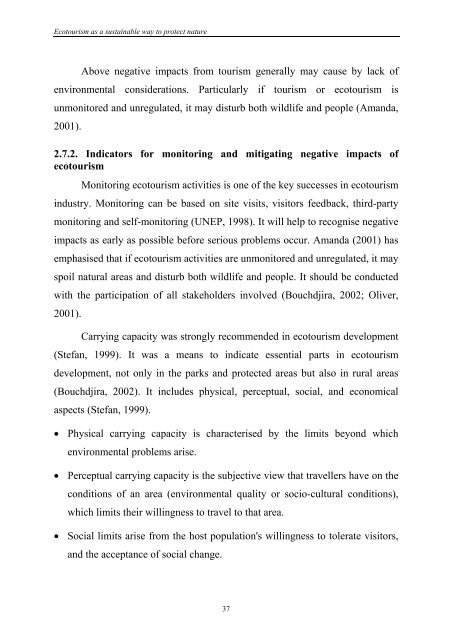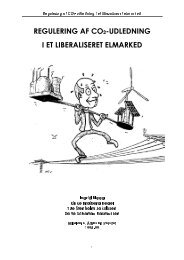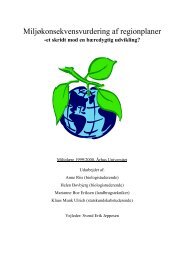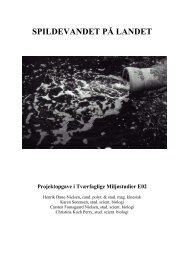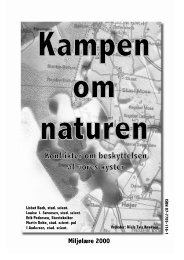University of Aarhus ECOTOURISM AS A WAY TO PROTECT ...
University of Aarhus ECOTOURISM AS A WAY TO PROTECT ...
University of Aarhus ECOTOURISM AS A WAY TO PROTECT ...
Create successful ePaper yourself
Turn your PDF publications into a flip-book with our unique Google optimized e-Paper software.
Ecotourism as a sustainable way to protect nature<br />
Above negative impacts from tourism generally may cause by lack <strong>of</strong><br />
environmental considerations. Particularly if tourism or ecotourism is<br />
unmonitored and unregulated, it may disturb both wildlife and people (Amanda,<br />
2001).<br />
2.7.2. Indicators for monitoring and mitigating negative impacts <strong>of</strong><br />
ecotourism<br />
Monitoring ecotourism activities is one <strong>of</strong> the key successes in ecotourism<br />
industry. Monitoring can be based on site visits, visitors feedback, third-party<br />
monitoring and self-monitoring (UNEP, 1998). It will help to recognise negative<br />
impacts as early as possible before serious problems occur. Amanda (2001) has<br />
emphasised that if ecotourism activities are unmonitored and unregulated, it may<br />
spoil natural areas and disturb both wildlife and people. It should be conducted<br />
with the participation <strong>of</strong> all stakeholders involved (Bouchdjira, 2002; Oliver,<br />
2001).<br />
Carrying capacity was strongly recommended in ecotourism development<br />
(Stefan, 1999). It was a means to indicate essential parts in ecotourism<br />
development, not only in the parks and protected areas but also in rural areas<br />
(Bouchdjira, 2002). It includes physical, perceptual, social, and economical<br />
aspects (Stefan, 1999).<br />
• Physical carrying capacity is characterised by the limits beyond which<br />
environmental problems arise.<br />
• Perceptual carrying capacity is the subjective view that travellers have on the<br />
conditions <strong>of</strong> an area (environmental quality or socio-cultural conditions),<br />
which limits their willingness to travel to that area.<br />
• Social limits arise from the host population's willingness to tolerate visitors,<br />
and the acceptance <strong>of</strong> social change.<br />
37


